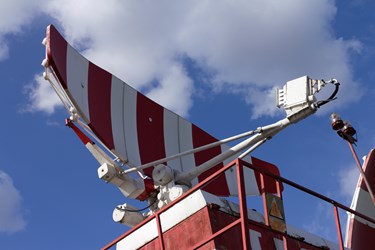Reduction On GaN's Pulse Recovery Time

Low Noise Amplifiers (LNAs) used in electronic warfare (EW) systems often face challenges from high-power interference, such as incoherent and coherent jamming signals. These disruptions can compromise the receiver’s ability to decode signals. While Gallium Arsenide (GaAs)-based LNAs traditionally required limiters for protection, Gallium Nitride (GaN)-based LNAs offer inherent robustness, eliminating this need. However, a key drawback of GaN LNAs is their extended pulse recovery time—the period needed to return to nominal gain after interference ends. Unlike GaAs amplifiers that typically recover in nanoseconds, GaN devices can take significantly longer, sometimes never fully recovering.
A study by Custom MMIC (now Qorvo) explored this issue and introduced equations correlating recovery time with interference energy (input power) and interference action (pulse duration). The equations differ for short (≤10 µs) and long (≥100 µs) pulses, though they may apply only to certain devices due to unspecified DUT details in the study.
Recent data from Qorvo show that increasing the quiescent bias current (IDQ) can reduce pulse recovery time in GaN LNAs, as demonstrated using the QPM1002 device. However, results also suggest diminishing returns at higher currents, potentially due to thermal effects degrading maximum gain. These findings imply that in addition to interference energy and duration, the amplifier’s gain capacity may influence recovery performance—though this hypothesis remains unproven. Overall, optimizing bias current appears to be a promising method for improving GaN LNA resilience in high-interference environments.
Get unlimited access to:
Enter your credentials below to log in. Not yet a member of Wireless Design Online? Subscribe today.
